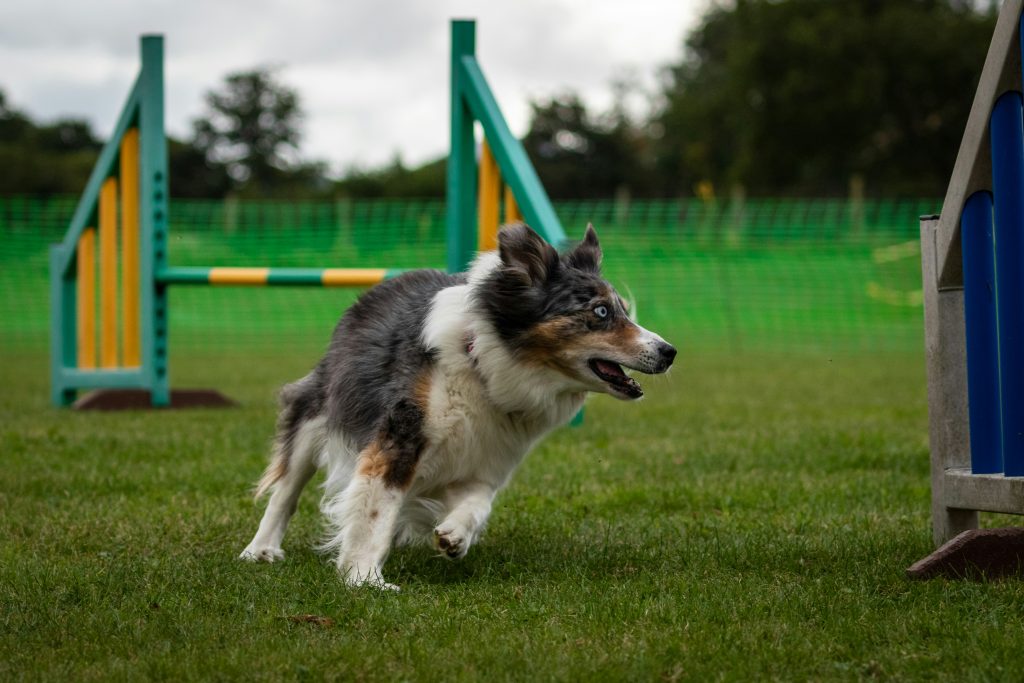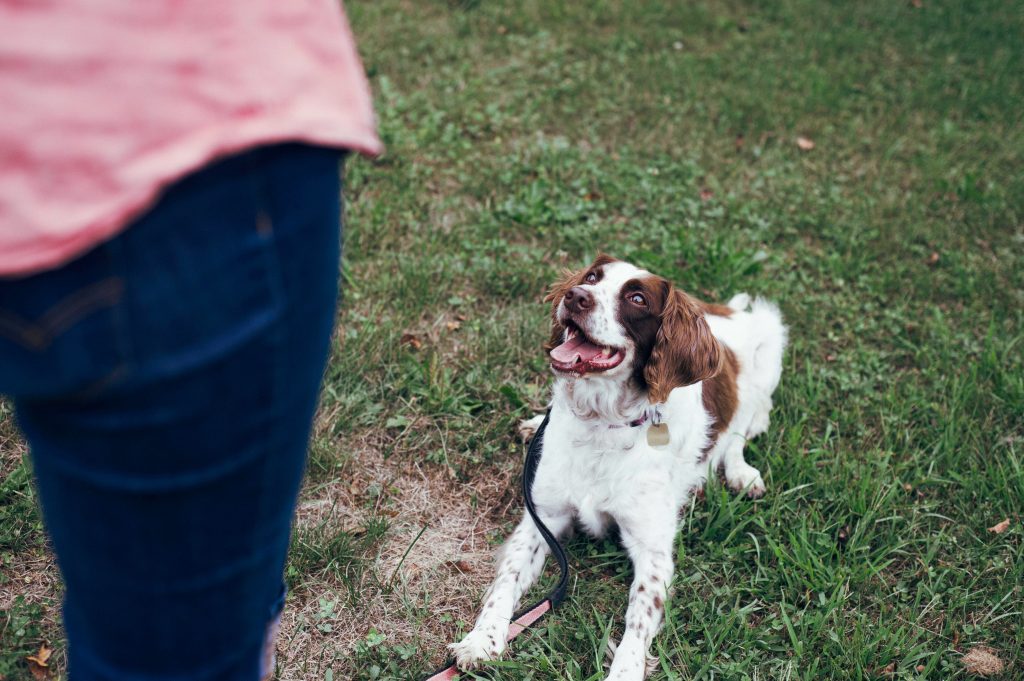Just like people, dogs come in all shapes, sizes, and personalities. Some are naturally outgoing and social, while others are more reserved, anxious, or shy. If you’ve ever had a timid pup—one who hides behind your legs at the dog park or trembles when meeting new people—you know how heartbreaking it can be to watch them struggle with the world around them.
But here’s the good news: training can transform your shy dog’s life. With the right techniques, patience, and encouragement, even the most reserved pup can blossom into a confident, outgoing, and happy companion.
In this post, we’ll explore how training helps shy dogs build confidence, overcome anxiety, and learn to trust both you and the world around them.

Understanding Shyness in Dogs
Before diving into training methods, it’s important to understand why some dogs are shy in the first place. Shyness can stem from a variety of causes:
- Genetics: Some dogs are simply born with more cautious temperaments.
- Lack of early socialization: Puppies who aren’t exposed to different people, sounds, environments, and other animals during their critical developmental window (3–14 weeks) are more likely to be fearful as adults.
- Negative experiences: A scary or traumatic event—like being yelled at, attacked by another dog, or abandoned—can leave lasting emotional imprints.
- Shelter life or past neglect: Dogs rescued from neglectful or abusive situations may have never learned to trust people.
Regardless of the reason, shyness is not a permanent state. With consistency, patience, and a positive approach, your dog can grow more confident with every small win.
Why Training Is the Key to Confidence
Training isn’t just about teaching your dog to follow commands—it’s about communication, trust, and helping your dog navigate their world with more comfort and control.
For shy dogs, training builds confidence in several powerful ways:
1. Predictability Creates Safety
Training introduces structure. When your dog knows what to expect and what’s expected of them, the world feels less chaotic. This predictability eases anxiety and gives shy dogs a sense of control over their environment.
2. Success Builds Confidence
Every time your dog succeeds—whether it’s making eye contact, sitting on cue, or simply walking past a stranger without retreating—they get a confidence boost. These little victories add up quickly.
3. You Become Their Anchor
Through training, your dog learns to look to you for guidance. You become their safe place, someone they trust to lead them through uncertain situations.
4. Positive Reinforcement Changes Associations
When shy dogs are rewarded for calm behavior in new situations, they begin to associate those situations with good things instead of fear. Over time, scary things become less threatening.
The Foundation: Building Trust First
Before you can start formal training, your shy dog needs to trust you. If your dog flinches when you reach out or avoids your gaze, pushing them into training too soon can backfire.
Start by focusing on bonding:
- Sit quietly near them with high-value treats, letting them come to you.
- Hand-feed meals to build positive associations with your presence.
- Avoid forcing interactions—let your dog approach new people or situations at their own pace.
- Use soft, calm tones and slow movements to avoid startling them.
When your dog starts seeking you out, wagging their tail, or relaxing in your presence, you’ll know trust is growing.

Gentle Training Techniques That Build Confidence
Once your shy dog feels safe around you, you can start introducing gentle, confidence-boosting training exercises.
1. Capturing and Shaping Confidence
Instead of trying to “correct” shy behavior, use positive reinforcement to capture moments of bravery.
Example: If your dog looks at a stranger without hiding or barking, mark it with a cheerful “yes!” and give a treat. You’re reinforcing the behavior of observing calmly—without pressure.
Shaping involves rewarding small steps toward a goal. Let’s say your dog is scared of stairs:
- Reward them for standing near the stairs.
- Then for placing one paw on the bottom step.
- Then for two paws.
- Eventually, you’ll work up to climbing the full flight.
Each step forward is a confidence boost—and it’s all done on your dog’s timeline.
2. Training Basic Commands
Teaching simple cues like “sit,” “down,” “touch,” and “watch me” gives your dog a toolkit for navigating social situations.
For example:
- Asking for a “sit” when your dog is nervous gives them something else to focus on.
- Teaching “watch me” can redirect their attention from a stressful trigger to your face.
These commands create structure and offer comfort during uncertain moments.
3. Desensitization and Counterconditioning
If your dog is shy around certain people, objects, or noises, these two training techniques are gold:
- Desensitization: Slowly and gradually expose your dog to the trigger in a controlled way. The key is to stay below their fear threshold—they should notice the trigger but not react fearfully.
- Counterconditioning: Pair that trigger with something your dog loves, like chicken or cheese. Over time, their brain starts to associate the once-scary thing with good feelings.
Example: If your dog is afraid of skateboards, start by standing far away from one and tossing treats. As they relax, move gradually closer over time.
Games That Build Bravery
Training doesn’t have to be stiff or serious. Confidence can grow through games and play, too:
- Treat trails: Leave a trail of treats leading to a mildly challenging place, like the edge of a new room or near a friendly visitor.
- Interactive toys: Puzzle toys that dispense treats help shy dogs learn to problem-solve and build independence.
- Nose work: Hiding treats around the house taps into your dog’s natural sniffing instincts and encourages exploration.
Play gives your dog permission to let their guard down and be curious instead of fearful.
Celebrating Progress—Not Perfection
With shy dogs, success might look different. You may not get a tail wag right away or a zoomie around the yard. But small milestones matter:
- Making eye contact instead of turning away.
- Approaching a new person without bolting.
- Walking down the block instead of freezing at the door.
Each brave moment deserves celebration. The more your dog feels successful, the more confident they’ll become.
Helping Shy Dogs Socialize
Socialization is crucial for all dogs—but especially for shy ones. The key is quality over quantity. Instead of flooding your dog with new experiences, introduce them slowly and positively:
- Invite calm, dog-savvy friends to offer treats (without forcing touch).
- Arrange parallel walks with calm, confident dogs.
- Let your dog observe new environments (parks, pet stores, cafes) from a safe distance at first.
The goal is to expose your dog without overwhelming them. Every successful outing adds another layer of confidence.
When to Seek Help
If your dog’s shyness is extreme—like growling, snapping, or constant shutdowns—it may be time to bring in a professional. A positive reinforcement trainer or behavior consultant can tailor a plan for your pup and help you avoid setbacks.
Never use punishment-based training methods with shy dogs. These only increase fear and can damage the trust you’ve worked hard to build.
Final Thoughts: Your Dog’s Journey is Worth It
Watching a shy dog transform through training is one of the most rewarding experiences you can have as a pet parent. Each small victory is a testament to your patience, love, and the powerful effect of positive training.
Training gives your timid dog a sense of security, a language to communicate with you, and the courage to face the world. Over time, those once-scary things become opportunities for success—and your once-shy pup becomes tenacious, resilient, and brave.
So be patient. Celebrate every win. And most of all, keep showing up for your dog. Confidence isn’t built in a day, but with training and trust, it’s absolutely within reach.
